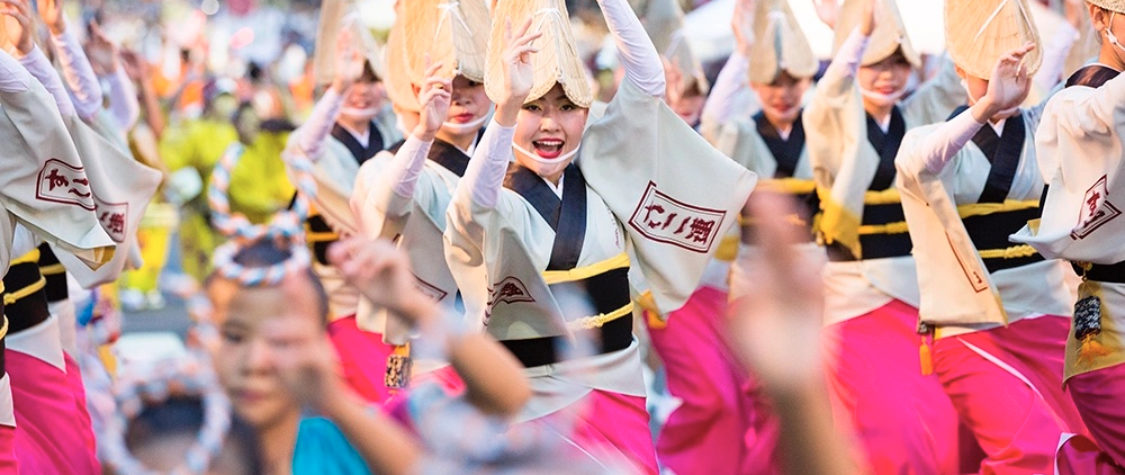 This year, for the first time in four years, the Tokyo Koenji Awa Odori returns in all its glory. Catch the action in Koenji, Suginami City, just six minutes by train from Shinjuku Station. The “Awa Odori” (Awa Dance), originally a local performance art of Tokushima Prefecture in Shikoku, has become one of Japan’s most important festivals.
This year, for the first time in four years, the Tokyo Koenji Awa Odori returns in all its glory. Catch the action in Koenji, Suginami City, just six minutes by train from Shinjuku Station. The “Awa Odori” (Awa Dance), originally a local performance art of Tokushima Prefecture in Shikoku, has become one of Japan’s most important festivals.
The Awa Odori was first held in Koenji in 1957 to attract crowds to the shopping district, and is now an event that draws the thrumming energy of as many as one million spectators. Dancers and musicians parade through the main street and shopping district in a long procession, whipping up excitement throughout the whole neighborhood.
Awaodori…
Awaodori is the traditional dance of Tokushima with a history that spans over 400 years. Today, Awaodori is enjoyed throughout Japan with local festivals adopting the name and preserving the culture.
There are two main types of dance – the “men’s dance” (which many females participate in too) that is deeply bent at the waist and low to the ground, and then, the “ladies dance” which is done on raised geta sandals wearing braided hats. Fundamentally, the dance is simple, you only need to raise your hands and lead with the same hand and foot as you move forward. Despite its simple nature, teams, known as “ren” create and develop their own unique performances. One aspect of Awaodori’s charm is the rich variety and dazzling performances that have grown from this simple dance.
 Tokyo’s Koenji Awaodori first began in 1957 as a festival to revitalize the small shopping streets throughout the town. Over the years the festival has grown and now over 10,000 dancers and over a 1,000,000 spectators come making it the festival that represents the charms of Tokyo’s summer. The Koenji Awaodori is held every year on the last weekend of August.
Tokyo’s Koenji Awaodori first began in 1957 as a festival to revitalize the small shopping streets throughout the town. Over the years the festival has grown and now over 10,000 dancers and over a 1,000,000 spectators come making it the festival that represents the charms of Tokyo’s summer. The Koenji Awaodori is held every year on the last weekend of August.
Additionally, the Awaodori teams within Koenji (members of the Koenji Awaodori Group) conduct media appearances, participate in a variety of events, foreign relations parties, and more keeping the joy of the Awaodori season year-round.
Through these efforts, the tradition born in Tokushima has grown to represent the culture progression of Japan. We of the Tokyo Koenji Awaodori will be a tool that not only represents the pride of people, local and regional, but also one that connects regions, connects peoples, and fosters and nurtures bonds that go beyond country. We will bear this responsibility with great care.














